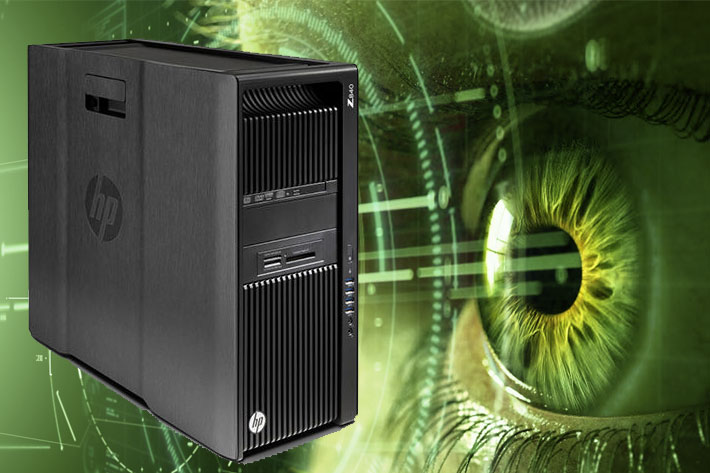
HP upgraded its HP Z Workstations, combining increased system expandability, higher-speed memory and multicore updates to power the most demanding workflows. Now it takes the next step and announces it is collaborating with NVIDIA to deliver workstations for 3D content creators.
The refreshed HP Z840, Z640 and Z440 desktop workstations recently announced feature next generation multi-core Intel Xeon processors, the latest graphics options from Nvidia Quadro and AMD FirePro, as well as a choice of Microsoft or Linux operating systems. With the new Intel Xeon E5-2600 v4 series processors, HP Z Workstations will support faster memory speeds than the previous generation processors, up to 2400MHz and can support up to 44 physical cores per-workstation.
The new HP Z Workstation configurations are Nvidia VR Ready systems, equipped with Nvidia Quadro professional GPUs. The new configurations provide the performance necessary for content creators to deliver a seamless and accurate VR experience. Each configuration is tested with optional HTC Vive head mounted displays to ensure a smooth path to the creation of inspiring, immersive content. The companies announced the systems at NVIDIA’s GPU Technology Conference, running April 4-7 at the San Jose Convention Center. The ultimate content creation configuration features dual Nvidia Quadro M6000 24GB cards with availability planned this quarter. HP Z workstations will also be present at NAB 2016.
“We are embarking on a new frontier that will change how content producers and artists develop the most immersive, visually stimulating content available,” said Jeff Wood, vice president, Worldwide Product Management, Workstations and Thin Clients, HP Inc. “HP Z desktop workstations with Nvidia graphics are the ideal combination for this new content creation era.”
VR content creators who use the recommended configurations can be, says HP, confident in outstanding VR performance that includes ultra-high frame rates and low latency, even with the most complex data sets. These performance factors are critical for driving VR experiences in head-mounted displays that are accurate, comfortable and compelling for VR content creators and consumers alike.
These new systems take advantage of up to two Nvidia Quadro M6000 24GB cards. The HP Z840 with dual M6000 24GB cards supports Nvidia VR SLI (Scalable Link Interface) technology which effectively doubles the system rendering power for the most demanding VR applications. Only desktop systems with dual GPUs can achieve this performance level. HP systems with Dual M6000 24GB cards also take advantage of Nvidia ‘s GPU Affinity API and VR Synchronization technologies to further maximize performance and virtually eliminate image tearing.
“VR is expanding beyond gaming to revolutionize fields across everyday life — like medicine, architecture, education, product design and retailing,” said Bob Pette, vice president, Professional Visualization, NVIDIA. “Our VR Ready initiative makes it easy for professional users to adopt VR technology to make better, more informed decisions and perform their best work.”
Professional application developers in product development, architecture, engineering and construction, media and entertainment, oil and gas exploration, education, research and healthcare can rely on the certified configurations, which include the HP Z240 Workstation with NVIDIA Quadro M5000, HP Z640 Workstation with Nvidia Quadro M6000 and the HP Z840 Workstation with dual NVIDIA Quadro M6000 graphics.
Pricing for the Nvidia VR Ready HP Z Workstation starts at $4,363. The systems are available now and the Dual M6000 24GB cards are available as an aftermarket option now and integrated in May. Vive by HTC is sold separately.
HP is not the only company looking at the VR market. Dell also announced recently their desktop solutions for VR, as well as Lenovo. They all offer solutions based on Nvivia VR. Models like the HP Z240, Z640, and Z840, Dell Precision T5810, T7810, and T7910, and the Lenovo P500, P710, and P900 all come with Nvidia -recommended configurations that meet the minimum requirements for the highest performing VR experience.
Quadro professional GPUs power Nvidia professional VR Ready systems. These systems put Nvidia’s VRWorks software development kit at the fingertips of VR headset and application developers. VRWorks offers exclusive tools and technologies — including Context Priority, Multi-Res Shading, Warp & Blend, Synchronization, GPU Affinity and GPU Direct — so pro developers can create VR experiences.
